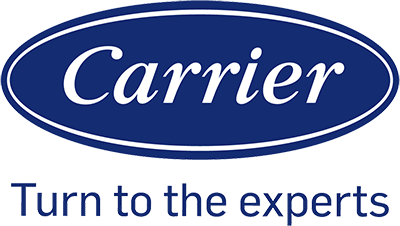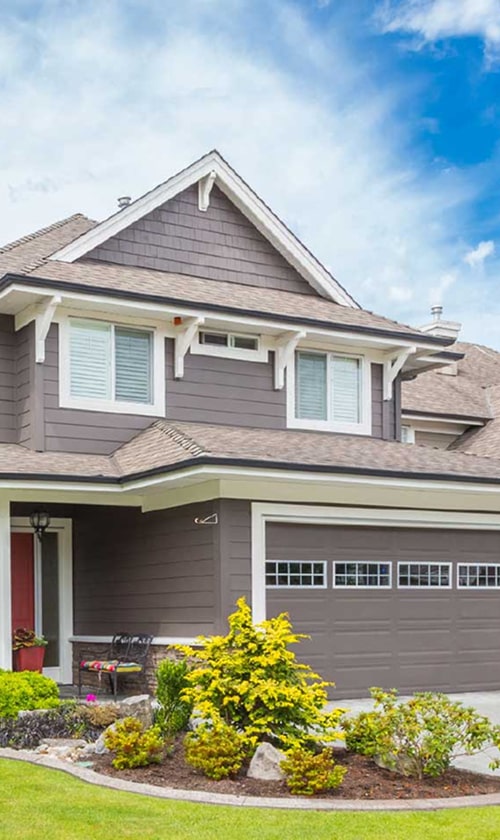Understanding Energy-Efficient Furnaces

When we explore energy-efficient furnaces, we focus on several key factors including AFUE ratings, operating costs, and long-term benefits. AFUE (Annual Fuel Utilization Efficiency) measures how effectively a furnace converts energy into heat. It’s expressed in a percentage; the higher the AFUE rating, the more energy-efficient the furnace.
High-efficiency furnaces boast an AFUE rating of 90% or more, which means they convert at least 90% of their fuel to heat. While the initial cost might be higher, the energy savings and cost savings over time make them a wise choice for our wallets and the environment.
Here are common types of furnaces and their associated efficiency factors:
- Electric Furnaces: Typically, these have a high AFUE rating since almost all the electricity they consume is converted into heat. However, electricity can be a more costly energy source depending on your local rates.
- Gas Furnaces: These are widely used and come in various efficiency ratings. The higher-efficiency models have improved heat exchangers to reduce energy consumption and increase cost savings.
- Oil Furnaces: Generally less efficient than gas and electric options. If you’re using an oil furnace, opting for one with a higher AFUE rating will lead to better energy conservation.
By selecting a high-efficiency furnace, we not only ensure efficient energy use but also contribute to energy conservation. In summary, the long-term savings from reduced energy consumption can significantly offset the initial expense of a high-efficiency heating system. Let’s choose our furnaces wisely, keeping efficiency ratings and the type of furnace at the forefront of our decision-making process.
Factors Influencing Furnace Efficiency

In our examination of energy-efficient furnaces, we focus on the critical components that affect overall efficiency. These elements range from the type of fuel utilized to the size of the unit, as well as cost implications and environmental considerations.
Fuel Types and Usage
Different fuel types offer varying levels of efficiency and can affect the furnace’s ability to convert fuel into usable heat. Gas furnaces, for example, are commonly used due to their high Annual Fuel Utilization Efficiency (AFUE) ratings, implying they can convert a greater percentage of gas into heat. Electric furnaces, while offering near-complete efficiency in terms of electricity usage, might lead to higher energy bills due to electricity costs. For boilers and heat pumps, how effectively they use fuel is pivotal in the balance between maintaining comfort and mitigating energy waste.
Size and Climate Considerations
Properly sizing a furnace is essential for optimizing efficiency. A unit too small will continually run to provide sufficient warmth, leading to excessive energy use. Conversely, a too-large furnace cycles on and off more frequently, causing wear and increasing maintenance needs. The climate in which we live also influences the heating needs; colder regions require furnaces with higher heat output, which in turn changes the dynamic of size versus efficiency.
Cost Analysis
Investing in an energy-efficient furnace can be viewed through the lens of both initial installation costs and long-term financial benefits. Upfront, higher-efficiency units might seem costly, but savings manifest in reduced utility bills over time. Budget considerations should also account for potential tax credits, rebates, and incentives that are available for energy-efficient furnace installations. It’s crucial to perform a cost-benefit analysis to determine the potential for long-term savings compared to the initial investment.
Environmental Impact
Highly efficient combustion units not only reduce energy bills but also play a significant role in sustainable living. They lower greenhouse gas emissions and decrease the carbon footprint of a household. Sustainability doesn’t end at furnace selection, though. Ensuring regular maintenance of the unit, including ductwork, thermostats, and heat exchangers, maximizes efficiency and prolongs the life of the system, further mitigating environmental impact.
Installation and Maintenance Considerations

When considering energy-efficient furnaces, we must pay careful attention to installation requirements and maintenance practices. These factors affect our heating system’s performance, long-term savings, and comfort.
Installation Requirements
Heating System Selection: We choose a furnace based on our specific needs, considering factors such as the size of our space and our climate. Energy-efficient heat pumps, boilers, and combustion units require different installation protocols.
- Ductwork Evaluation: We ensure that our ducts or duct system is properly sealed and insulated. This optimizes the efficiency of our new system.
- Quotes and Assessments: We obtain multiple quotes from qualified professionals, who provide detailed assessments for our unique installation needs.
Maintenance and Repairs
Regular Maintenance: To ensure our heating system operates efficiently, we adhere to a regular maintenance schedule. This typically involves:
- Inspecting and cleaning filters, ducts, and vents
- Checking insulation and ductwork for leaks or damage
- Annual professional evaluations for heat pumps, boilers, or sealed combustion units
Repair and Warranties: Understanding our furnace’s warranty can save on repair costs. We promptly address repairs, as minor issues can impact operating costs and indoor air quality.
Upgrading Existing Systems
Opportunities for energy-efficient upgrades can often be identified in existing systems. When upgrading:
- We evaluate our system’s performance, considering energy bills and preferences for improved comfort and air quality.
- We assess furnace replacement options, seeking systems that offer long-term cost savings and meet our insulation and space requirements.
- Upgrades may include installing advanced ductwork, improving insulation, or switching to high-efficiency heat pumps.
Advanced Furnace Technologies

In our exploration of advanced furnace technologies, we’ll analyze system innovations that maximize energy efficiency, enhance indoor comfort and air quality, and adhere to rigorous efficiency certifications.
Innovative Heating Systems
Advanced furnaces incorporate intelligent controls and learning capabilities, representing a significant leap in energy savings and reduced emissions. High-efficiency furnaces, particularly condensing furnaces, excel by capturing heat that older systems would lose through the chimney. Our heating systems now boast variable speed blowers that adjust airflow and temperature to precise needs, promoting an extended lifespan of the unit and noticeable energy savings.
- Learning Capabilities: Smart thermostats adjust heating based on behavior patterns.
- Intelligent Controls: Furnaces adjust operation for optimal efficiency and comfort.
Enhanced Comfort and Air Quality
Prioritizing comfort alongside efficiency, modern furnaces integrate with sophisticated HVAC systems to provide consistent, gentle heating and improved indoor air quality. These systems are designed to reduce the circulation of pollutants and allergens, thanks to superior filtration technologies. Further, they work seamlessly with existing air conditioning units, maintaining optimal indoor air quality regardless of the season.
- Enhanced Comfort: Steady, even heating without cold spots.
- Improved Air Quality: Advanced filters and regulated airflow reduce contaminants.
Efficiency Ratings and Certifications
We closely follow Department of Energy (DOE) guidelines for energy efficiency, ensuring that our furnaces meet or exceed SEER and energy-efficient ratings. These ratings, along with available rebates and incentives, make it clear which systems will offer the highest energy savings and lowest environmental impact. Lower greenhouse gas emissions are a key benefit of these high-performance units, reflecting our commitment to reducing environmental impact.
- Furnace Efficiency Ratings: Labels that indicate the unit’s energy performance.
- Certifications and Incentives: Rewards for choosing high-efficiency options.
By embracing these advanced technologies, we provide not only cost-effective heating solutions but also play our part in fostering a greener future.
Choosing the Right Furnace for Your Home

When selecting a furnace, we consider several factors to ensure energy efficiency and comfort. Here we outline the key points to guide our decision.
Size: Proper sizing is critical for efficiency. We assess our heating needs based on climate and house size to avoid oversizing, which can lead to inefficiency and discomfort.
Budget: We must balance upfront cost with long-term savings. A higher AFUE (Annual Fuel Utilization Efficiency) rating means a more energy-efficient furnace, but also a higher initial expenditure.
Heating Needs and Comfort: Our ultimate goal is to meet our heating needs while providing a comfortable environment. An energy-efficient furnace should maintain consistent temperatures without frequent cycling.
| Factor | Consideration |
|---|---|
| AFUE | Aim for higher for efficiency |
| Size | Match to home’s heating needs |
| Budget | Consider long-term energy savings |
| Climate | Dictates heating demands |
| Installation | Professional recommended |
| Maintenance | Regular servicing needed |
Installation and Maintenance: A professional installation ensures optimal furnace performance. Regular maintenance is key to sustaining efficiency and durability.
Climate: Our local climate dictates the heating power required. We choose a system robust enough to handle our coldest months with ease.
Preferences: We take into account any specific preferences we have, such as the type of furnace or fuel source.
Finally, we gather multiple quotes, compare warranties, and consider the durability of units to make an informed and confident choice.
Each of these factors directly impacts not only our immediate comfort but also our long-term costs and environmental footprint.
Frequently Asked Questions
What are the key features to look for in a high-efficiency furnace?
When evaluating high-efficiency furnaces, we prioritize features such as the Annual Fuel Utilization Efficiency (AFUE) rating, modulating gas valves, variable-speed blower motors, and dual heat exchangers. An AFUE rating of 90% or higher signifies exceptional efficiency.
How do ENERGY STAR certified furnaces compare in terms of energy savings?
ENERGY STAR certified furnaces are rigorously tested to meet strict energy efficiency guidelines set by the U.S. Environmental Protection Agency. We often find that they save significantly on energy bills compared to non-certified models, primarily due to higher AFUE ratings and advanced features.
What potential drawbacks should be considered when purchasing a high-efficiency furnace?
When investing in a high-efficiency furnace, we carefully consider the initial cost, which is typically higher than less efficient models. We also assess the compatibility with existing ductwork, the potential need for new venting systems, and the availability of qualified technicians for installation and maintenance.
How can homeowners determine the most cost-effective furnace for their home?
To identify the most cost-effective furnace, we conduct a thorough analysis of the home’s heating requirements, assess local climate, and calculate long-term energy savings versus upfront costs. We also consider lifespan, repair and maintenance costs, and potential future energy price fluctuations.
What heating options are available that meet both efficiency and environmental standards?
We explore various heating options that both save energy and reduce environmental impact. These include electric heat pumps, which are effective in mild climates, as well as solar-enabled and geothermal heating systems that utilize renewable energy sources.
Are there incentives or tax credits available for installing an energy-efficient furnace?
Many regions offer incentives or tax credits for the installation of energy-efficient furnaces. We recommend homeowners investigate local, state, and federal programs that could offset some of the costs associated with purchasing and installing qualifying high-efficiency heating systems.




